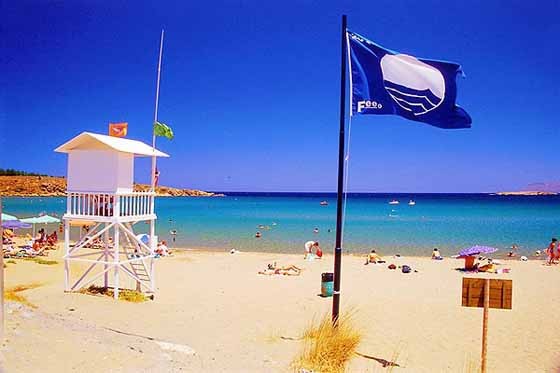In 2015 Italy Boasts 280 Blue Flags Beaches and region Liguria has again the highest number of Blue Flag beaches
Italy has 280 top beaches, seven more than last year, in 147 municipalities. The figures emerge from the 2015 Blue Flag table, which certifies the services and environmental friendliness of coastal and lakeside resorts, as well as the cleanliness of the water.
Blue Flags are international distinctions, created in 1987, with patronage and support from UNEP, the United Nations Environment Programme, and the World Tourism Organisation, which aims to promote a sustainable development at beaches and marinas through strict criteria such as water quality, environmental management, safety and services provided close to or within the beach area. To the Blue Flag Programme participate beaches and marinas in 41 countries of all the world.
LIGURIA’S TOP SLOT – Liguria again tops the regional table with 23 flags, increasing by three this year.
It is followed by Tuscany with 18, the central Marche region with 17, Campania has one more flag with 14, Apulia is in 5th position with 11, Emilia Romagna remains stable with 9, Abruzzo lost 2 flags with 8, Veneto region has one more reaching 8 flags, as well as Lazio and Sardinia that gains 2 flags. Sicily has 5 flags, Calabria confirms 4, Molise 3, Friuli Venezia Giulia 2 and Basilicata 1. But Blue Flags are also for the lakes and Trentino Alto Adige leads with 5 flags, followed by Piedmont with 2 and then Lombardy with 1 flag.
In the West Liguria there is the new entry of Taggia, but also the confim of Bordighera, San Lorenzo al mare, Santo Stefano al mare and Bergeggi. These are the other 2015 Blue Flags in Liguria region: Chiavari, Moneglia, Lavagna, Santa Margherita Ligure, Framura – Fornaci, Lerici, Ameglia – Fiumaretta, Finale Ligure, Albisola Superiore, Pietra Ligure, Loano, Savona Fornaci, Varazze, Spotorno – Zona Moli Sirio e Sant’Antonio, Albissola Marina, Noli and Celle Ligure.


